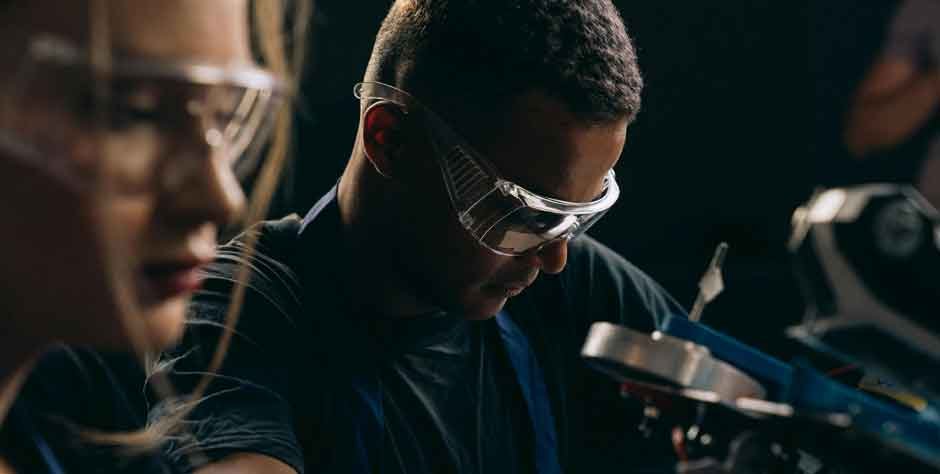Smart manufacturing technologies are revolutionizing the industrial landscape, ushering in an era of efficiency, agility, and innovation. Modern digital technology, automation, and data analytics are all being integrated to make industrial processes smarter and more flexible than they have ever been. Along with increasing production, this shift is also resulting in considerable cost reductions and improvements in quality.
This article will delve into the rise of smart manufacturing technologies, exploring their impact across various industries and the key factors driving their adoption.
Advanced Robotics and Automation:
Advanced robotics and automation have become synonymous with smart manufacturing, revolutionizing traditional production processes and workflows. Robotics technology, coupled with artificial intelligence and machine learning algorithms, is enabling the development of highly flexible and adaptable manufacturing systems. Robots are becoming increasingly important in boosting efficiency and precision in manufacturing processes. Examples of this include robotic arms doing complex assembly jobs and autonomous guided vehicles navigating factory floors.
By automating repetitive and labor-intensive processes, manufacturers may increase production dramatically and free up human resources for more sophisticated and value-added work.
Data Analytics and Predictive Maintenance:
Data analytics and predictive maintenance are revolutionizing asset management in manufacturing. They enable proactive maintenance strategies and minimize unplanned downtime. Manufacturers may obtain important insights into the condition and functionality of their assets by utilizing historical and current data from sensors, machinery, and production processes.
This data is analyzed by advanced analytics algorithms that find trends, abnormalities, and possible failure mechanisms. This information enables maintenance teams to take action before serious problems develop. Predictive maintenance not only reduces maintenance costs but also extends the lifespan of equipment and improves overall operational efficiency.
Integration of Internet of Things (IoT) in Manufacturing:
The incorporation of the Internet of Things (IoT) into manufacturing procedures has proven to be a revolutionary approach, providing unparalleled degrees of connection and information sharing throughout the manufacturing process. IoT devices, equipped with sensors and actuators, gather real-time data on equipment performance, product quality, and environmental conditions. Then, the data is evaluated to estimate maintenance requirements, optimize operations, and pinpoint areas for improvement.
For example, in a smart factory setting, IoT-enabled machines can communicate with each other to self-diagnose issues and adjust production schedules accordingly, minimizing downtime and maximizing throughput.
Cybersecurity Challenges and Solutions:
As manufacturing systems become increasingly interconnected and digitized, cybersecurity has emerged as a critical concern for manufacturers worldwide. The expansion of the attack surface brought about by the widespread use of cloud-based manufacturing software platforms and the proliferation of connected devices makes manufacturing settings more susceptible to cyber-attacks. Manufacturers confront a wide range of cybersecurity threats that can have far-reaching effects, from supply chain disruptions and intellectual property theft to ransomware attacks that target production systems.
Manufacturers need to have strong cybersecurity measures in place, such as network segmentation, encryption, intrusion detection systems, and staff training initiatives, to reduce these risks.
Human-Machine Collaboration and Workforce Upskilling:
The rise of smart manufacturing technologies is reshaping the role of human workers on the factory floor, fostering greater collaboration between humans and machines. Rather than replacing human workers, advanced automation technologies are augmenting their capabilities, enabling them to work more effectively alongside robots and intelligent systems. This paradigm shift requires a fundamental reimagining of workforce skills and competencies, emphasizing digital literacy, problem-solving, and adaptability.
For their staff to fully utilize smart manufacturing technology, manufacturers need to engage in extensive training and upskilling programs.
Supply Chain Optimization and Resilience:
Smart manufacturing technologies are driving significant improvements in supply chain optimization and resilience, enabling manufacturers to anticipate and mitigate disruptions more effectively. By utilizing real-time data from IoT sensors, industrial software platforms, and external data sources, manufacturers may manage inventory levels, detect possible bottlenecks, and obtain end-to-end insight into their supply chains. With the use of sophisticated analytics algorithms, this data may be used to predict demand, enhance production plans, and dynamically modify supply chain activities in response to shifting market circumstances.
Additionally, the adoption of technologies such as blockchain can enhance supply chain transparency and traceability, reduce the risk of counterfeit products, and ensure compliance with regulatory requirements.
Conclusion:
In conclusion, the rise of smart manufacturing technologies is reshaping the industrial landscape, driving unprecedented levels of efficiency, agility, and innovation. Manufacturers are using a wide range of technologies to improve their operations and competitiveness, from the integration of IoT devices and sophisticated robots to data analytics and predictive maintenance. Adoption of smart manufacturing technology is not without its difficulties, though, as supply chain interruptions, cybersecurity threats, and worker upskilling all pose issues.
By proactively addressing these challenges and investing in the right capabilities, manufacturers can unlock smart manufacturing’s full potential and pave the way for a more sustainable and resilient future.






